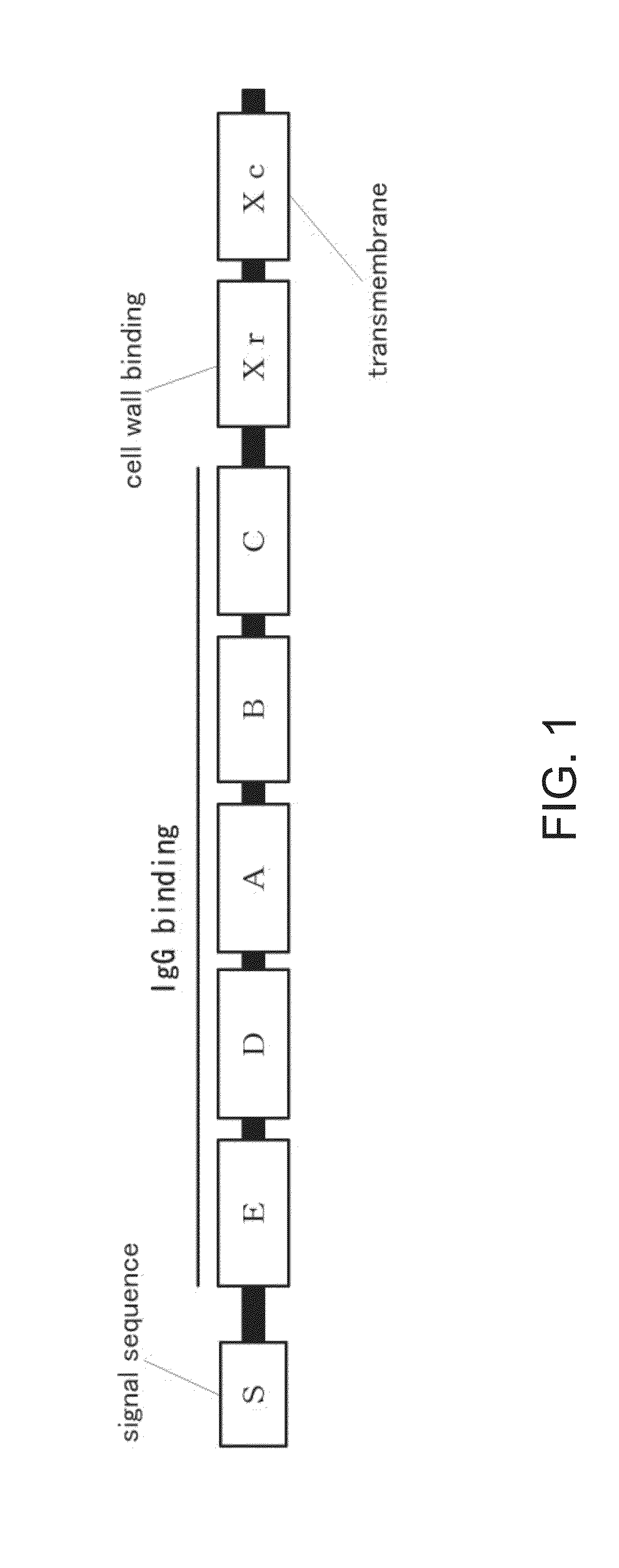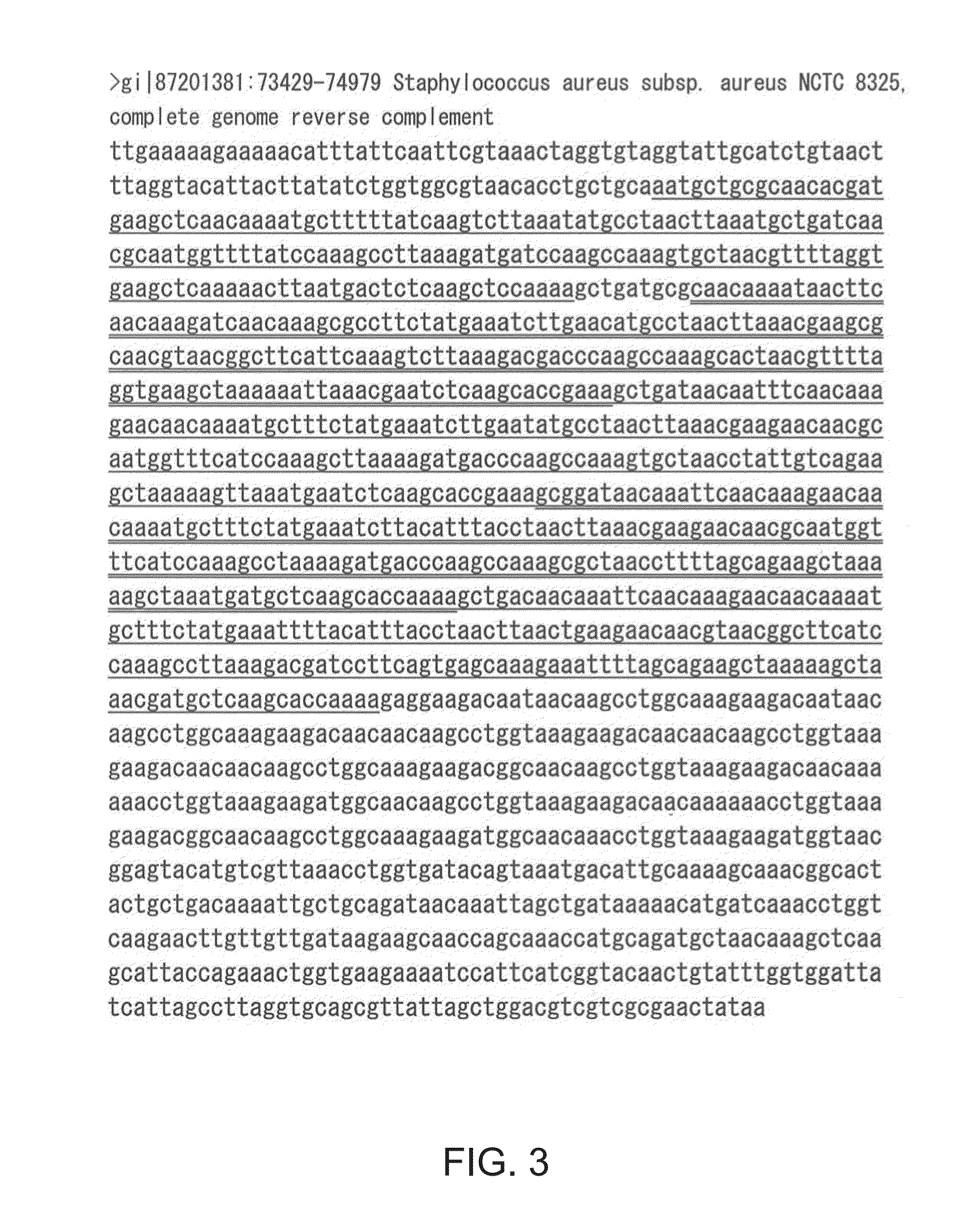Mutated protein of protein a having reduced affinity in acidic region and antibody-capturing agent
a technology of which is applied in the field of mutational protein of protein having reduced affinity in acidic region and antibody-capturing agent, can solve the problems of deterioration of antibodies, loss of original functions, and insufficient recovery of antibodies, so as to reduce the ability to bind, increase the demand for these products, and facilitate elution
- Summary
- Abstract
- Description
- Claims
- Application Information
AI Technical Summary
Benefits of technology
Problems solved by technology
Method used
Image
Examples
example 1
1) Selection of Mutation Site in Protein A Extracellular Domain and Amino Acid Residue for Substitution
[0149]First, three-dimensional structure coordinate data on a complex of the B domain of protein A and the Fc region of human immunoglobulin G was downloaded from the international protein three-dimensional structure database Protein Data Bank (PDB; http: / / www.rcsb.org / pdb / home / home.do) (PDB code: 1FC2). Subsequently, amino acid residues of the B domain of protein A that were located within the range of 10 angstroms from the Fc region and had a 20% or more ratio of exposed surface area in the case of the B domain alone of protein A were calculated using the three-dimensional structure coordinate data and selected as sites to be mutated. The amino acid residues of the selected sites are 18 residues in the wild-type amino acid sequence of the B domain of protein A represented by [SEQ ID NO: 1]: Phe5, Asn6, Gln9, Gln10, Asn11, Phe13, Tyr14, Glu15, Leu17, His18, Glu24, Glu25, Arg27, As...
example 2
2) Selection of Preferred Mutation Site by Screening Experiment of Mutated Protein A Library
[0163]Of the 18 sites to be mutated (residues 5, 6, 9, 10, 11, 13, 14, 15, 17, 18, 24, 25, 27, 28, 31, 32, 35, and 36) derived from the three-dimensional structure of the B domain-Fc complex, preferred sites to be mutated that could be expected to produce higher effects were selected. The total number of mutants in which any one or more of these 18 sites to be mutated is substituted by a histidine residue is theoretically 262,143 (=218−1) provided that each site is either wild-type amino acid residue or histidine residue. In order to identify a mutant that can be expected to have higher effects from among such a large number of mutants, a mutated protein A library can be constructed by use of a molecular evolution engineering technique and appropriately screened to select favorable mutants. The amino acid sequences of the obtained favorable mutants can be further analyzed statistically to sel...
example 3
3) Design of Modified Protein A Extracellular Domain
[0193]As is evident from above, the sites to be mutated selected in the design of the modified protein of the present invention are not limited to one residue.
[0194]Appropriate residues can be selected from among a plurality of sites to be mutated and combined to prepare a point mutant or a multiple mutant as the modified protein. This selection may be performed at random or in consideration of other pieces of information known in the art, such as structure activity correlation. Alternatively, these mutations may be combined with a mutation already known to change the properties of the protein A extracellular domain to preferred ones.
[0195]The modified protein may have, for example, the amino acid sequence of an Asn6His / Asn11His / Glu15Asp / Glu24Gln / Glu25His quintuple mutant of the B domain of protein A represented by [SEQ ID NO: 7], or an Asn6His / Glu24His / Glu25Gln / Gln32His / Asp36His quintuple mutant of the B domain of protein A repres...
PUM
| Property | Measurement | Unit |
|---|---|---|
| pH | aaaaa | aaaaa |
| pH | aaaaa | aaaaa |
| temperature | aaaaa | aaaaa |
Abstract
Description
Claims
Application Information
 Login to View More
Login to View More - R&D
- Intellectual Property
- Life Sciences
- Materials
- Tech Scout
- Unparalleled Data Quality
- Higher Quality Content
- 60% Fewer Hallucinations
Browse by: Latest US Patents, China's latest patents, Technical Efficacy Thesaurus, Application Domain, Technology Topic, Popular Technical Reports.
© 2025 PatSnap. All rights reserved.Legal|Privacy policy|Modern Slavery Act Transparency Statement|Sitemap|About US| Contact US: help@patsnap.com



